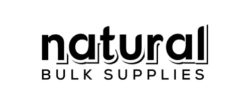BTMS-50 Conditioner Bars: Pro Tips from a Cosmetic Chemist
Posted by Kennece ShakiAvon on on Apr 30th 2025
Formulating Conditioner Bars with BTMS-50
Why BTMS-50 is the Better Choice for Solid Conditioning Bars
Conditioner bars have quickly gained popularity among both eco-conscious consumers and innovative formulators. As sustainability becomes a greater priority in the personal care industry, more formulators are pivoting toward solid formats that reduce water usage and eliminate plastic packaging. And while creating a bar may seem like a simple switch from a liquid formula, it comes with unique challenges, starting with your conditioning agent.
In traditional liquid hair conditioners, formulators often choose between BTMS-25 or BTMS-50. While both are conditioning emulsifiers containing the cationic conditioning agent Behentrimonium Methosulfate, they are not as interchangeable when it comes to solid formulations.

What’s the Difference Between BTMS-25 and BTMS-50?
Let’s take a look at the compositions:
- BTMS-25 (INCI: Behentrimonium Methosulfate (and) Cetearyl Alcohol):
Contains 25% active Behentrimonium Methosulfate, with the remaining 75% being Cetearyl Alcohol (a combination of cetyl and stearyl alcohol). - BTMS-50 (INCI: Behentrimonium Methosulfate (and) Cetyl Alcohol (and) Butylene Glycol):
Contains 50% active Behentrimonium Methosulfate, with added cetyl alcohol and butylene glycol for improved conditioning and solubility.
|
Feature |
BTMS-25 |
BTMS-50 |
|
INCI Name |
Behentrimonium Methosulfate (and) Cetearyl Alcohol |
Behentrimonium Methosulfate (and) Cetyl Alcohol (and) Butylene Glycol |
|
Active Conditioning Agent |
25% Behentrimonium Methosulfate |
50% Behentrimonium Methosulfate |
|
Additional Ingredients |
75% Cetearyl Alcohol (fatty alcohol blend) |
Cetyl Alcohol + Butylene Glycol |
|
Best For |
Liquid conditioners |
Solid conditioner bars and waterless products |
|
Formulation Flexibility |
Limited — already contains a lot of fatty alcohols |
High — allows you to add your own bar-building ingredients |
|
Risk When Overloaded |
Can feel waxy or draggy in solid bars |
Less risk of waxy texture, better glide |
When crafting a conditioner bar, BTMS-50 is the superior option. Why? Conditioner bars require the addition of hardeners—such as fatty alcohols or non-ionic emulsifiers—to create a solid form. BTMS-25 already includes a significant amount of fatty alcohols, so adding more can lead to a bar that feels draggy, waxy, and less effective in the shower. In contrast, BTMS-50 delivers a higher active content, meaning you can add other bar-building ingredients without compromising performance. All while enjoying the benefits of the additional Behentrimonium Methosulfate content.
Why Cationic Ingredients Matter
BTMS-50 is a cationic emulsifier, which means it carries a positive charge. In hair care, this is a major benefit. Hair strands carry a negative charge, especially when damaged or wet. The positively charged conditioning agent binds to the hair, smoothing the cuticle, reducing static, and improving manageability.
But with this advantage comes a word of caution: never combine cationic materials with anionic ingredients. Cationic and anionic ingredients are incompatible and will destabilize your formulation, leading to poor performance or even complete product failure. Always check the charge of your ingredients and ensure full compatibility throughout the formula.
Formulating for Performance and pH
Unlike liquid conditioners where pH can be tested and adjusted with ease, conditioner bars require a different approach. Since they’re waterless until activated during use, you’ll need to learn how to properly test the pH of your bar in a way that reflects its performance on hair.
For optimal conditioning, your bar should fall within a pH range of 4.0 to 5.0, where the cationic behavior of BTMS-50 thrives.
If you're unsure how to accurately test pH in solid conditioner bars, Your Cosmetic Chemist offers a detailed Conditioner Bar Workshop designed to guide you through the entire process. This workshop covers everything from ingredient selection and proper formulation techniques to pH testing methods specifically suited for solid formats. It also includes several beginner-friendly formulations to help you get started with confidence and eliminate the trial-and-error phase of formulating.
Enhance Your Bars with Added Benefits
One of the best parts of making conditioner bars is the ability to customize! Here are a few powerhouse ingredients you can incorporate into your base:
- Lipids: Add nourishment with rich carrier oils and butters such as jojoba, argan, cocoa, or shea.
- DL-Panthenol (Pro-Vitamin B5): Enhances moisture retention and gives the hair a healthy shine.
- Polyquaterniums: Improve combability and impart a silky feel.
- Hydrolyzed Proteins: Strengthen hair, reduce breakage, and increase elasticity.
When it comes to conditioner bars, ingredient choice matters—especially your emulsifier. BTMS-50 delivers the conditioning power and formulation flexibility you need to create smooth-gliding, salon-quality bars. Whether you're just starting out or refining your product line, using the right ingredients—and understanding how to work with them—is key to success.
About the Author
This blog was written by Kennece ShakiAvon, a cosmetic chemist and the educator behind Your Cosmetic Chemist. She’s known in the formulating community for breaking down complex topics into simple, easy-to-understand lessons. Her tutorials are clear, thoughtful, and trusted by beginners and professionals alike.
Kennece has helped so many new formulators learn how to create safe and effective personal care products with confidence. If you're interested in learning how to make solid conditioner bars and feel unsure about things like pH testing or choosing the right ingredients, you can click here to explore her classes and resources.
Her Conditioner Bar Workshop includes three beginner-friendly formulations, a step-by-step instructional video showing how to test pH correctly for solid bars, a 14-page class ebook, and ongoing support through a private Facebook group where you can ask questions anytime.
Disclaimer: The information, opinions, and recommendations shared in this article are those of the author and do not necessarily reflect the views of Natural Bulk Supplies. This content is provided for educational purposes only. Natural Bulk Supplies is not liable for how this information is used. As an ingredient supplier, we support independent experts like Kennece by featuring their knowledge on our platform.

